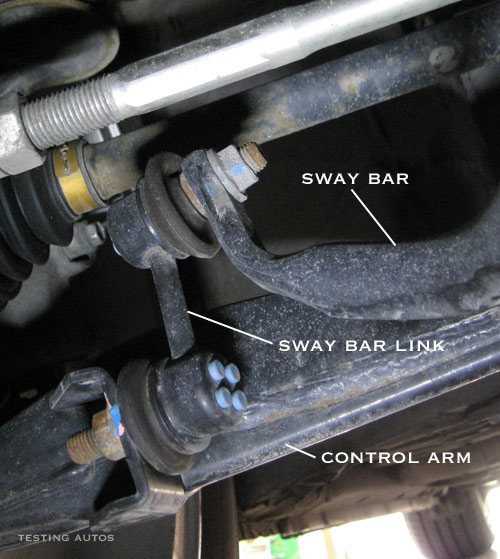Rubber bushings are usually fitted between the sway bar and the control arms.
Front sway bar end links symptoms.
This is a quick video of how to tell if your sway bar end links.
The biggest issue with a sway bar is its deteriorating bushings.
Some vehicles are only equipped with a front sway bar.
Some of the most common symptoms of a bad sway bar bushing or sway bar links going bad are.
A sway bar link is a small component that connects the front wheels to the suspension of the car engine via the sway bar.
In certain cars the rear end will also have stabilizer bar links.
This is the first.
This is usually the suspect of under car noises and clunks when go over bumps.
Brackets and bushing are used to secure the bar to the control arms or the sway bar end links connect it to the strut or control arm.
The sway bar has rubber bushings on its two ends where the bar links to other suspension parts.
These bushings are made of rubber a material that is easily compromised once it comes under stress.
In certain cars the rear end will also have.
A sway bar link connects the end of the bar to the suspension itself.
The stabilizer bar links attach to the lower control arm at the front end of most domestic and foreign cars and trucks sold in the united states.
With a little background on the part and how it is secured to the vehicle here are the two main symptoms that show the warning signs of worn out sway bar links.
The sway bar anti roll bar and the stabilizer bar are one and the same thing.
Replacing the front end anti sway bar links and bushings allows the mechanic to ensure the front end suspension alignment is complete thereby setting straight the alignment.
Sway bars are connected to the frame of the car with rubber bushings and in most cases ball joints secure the ends of the sway bar with the sway bar link.
The sway bar is a thin tubular piece of metal bolted to the suspension on each side of the car either at the front or the back and often both.
The stabilizer bar links attach to the lower control arm at the front end of most domestic and foreign cars and trucks sold in the united states.
However the ones that cause the most damage are in the front and located directly behind your left and right front tires.
They provide the car with balance and stability while it is being turned or cornered.

